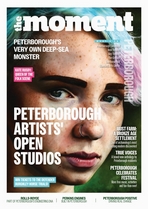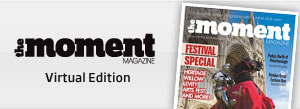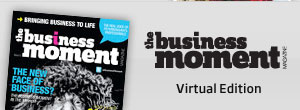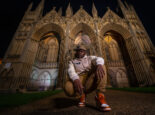Queensgate Brings The Colour In
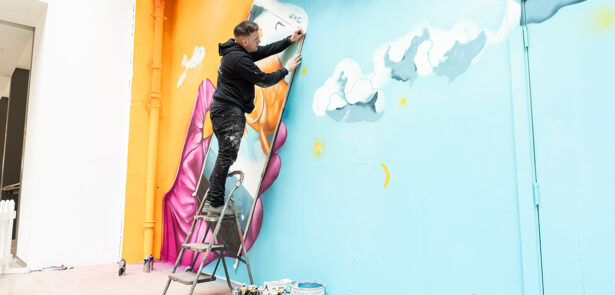
Queensgate holds a unique place in many Peterborian hearts as more than just a shopping destination – it’s the place for that first special purchase, lazy Saturdays browsing with friends choosing treats and spending pocket money, and the go-to spot for checking out new, must-have items. Renowned local street artists Stuart Payn and Nathan Murdoch were therefore delighted to be asked to bring a series of ambitious new murals to the much-loved city landmark – and they spoke to The Moment about how the project evolved...
How did the plan for these murals come about?
Nathan: Part of my initial proposal was that we’re creating something that’s unique and hand-painted – people can see the spray strokes as they happened. There was an initial idea before we came on board to create pictures using laser-cut vinyl, but we all agreed that something created by artists would look and feel much better. A mural will be much longer lasting than vinyl, too – plus it’s exciting for the public to see the painting process in action. People got to engage with us and ask us questions.
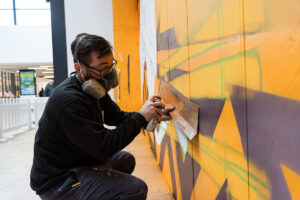 Stuart: I visited the site numerous times to imagine how things might work and went through a whole process of interacting with the space, visualising the process before I put pen to paper for initial designs. Queensgate were brilliant as well – just asking for a few edits here and there to help hone it. Then there was a back-and-forth process for further refining, and I also spent a lot of time balancing everything between each artwork, because I had to ensure that they fit in harmoniously with everything else. There’s a lot of colour, lots of little details, and each panel can be viewed as an individual artwork, but the entire collection can also be seen as a single artwork. It’s a journey that starts from one end and goes to the other, where you begin with the first panel, depicting fish, and then are drawn into an immersive Queensgate experience. Along the way, you encounter fantastic creatures and notice repetition of a triangle shape both in the patterns and the flow and structure of the work. By the end, you see a big group of all the animal characters together, then you can follow it back the other way because it also works in reverse – there’s a flow to it.
Stuart: I visited the site numerous times to imagine how things might work and went through a whole process of interacting with the space, visualising the process before I put pen to paper for initial designs. Queensgate were brilliant as well – just asking for a few edits here and there to help hone it. Then there was a back-and-forth process for further refining, and I also spent a lot of time balancing everything between each artwork, because I had to ensure that they fit in harmoniously with everything else. There’s a lot of colour, lots of little details, and each panel can be viewed as an individual artwork, but the entire collection can also be seen as a single artwork. It’s a journey that starts from one end and goes to the other, where you begin with the first panel, depicting fish, and then are drawn into an immersive Queensgate experience. Along the way, you encounter fantastic creatures and notice repetition of a triangle shape both in the patterns and the flow and structure of the work. By the end, you see a big group of all the animal characters together, then you can follow it back the other way because it also works in reverse – there’s a flow to it.
N: Being able to paint the floor was a crucial part of the project because during the initial site visits, we noticed that the floor in front of the panels was plywood, not marble. Since the artwork overlaps from the walls onto the floor, it creates a fully immersive experience. When you stand by it, you can almost feel and hear the artwork! Queensgate really appreciated this aspect and supported it – overall, they were excellent to work with because they were not afraid to take creative risks.
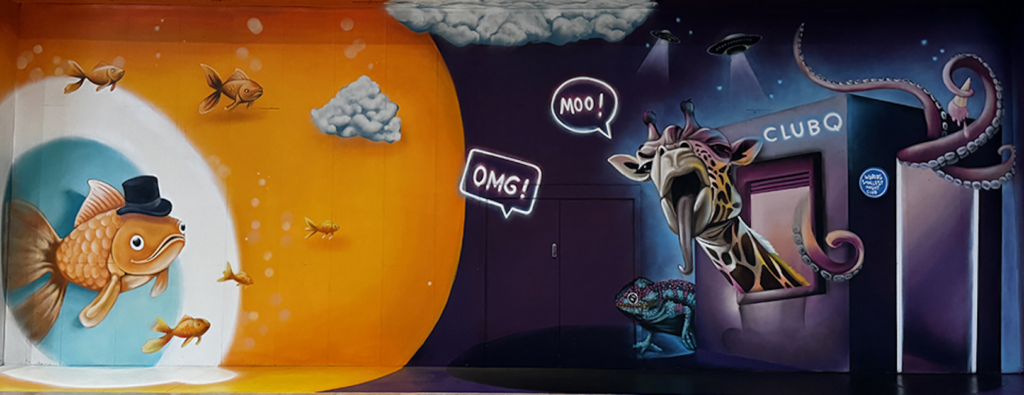 You’ve been on the scene for a while now – how has it been watching graffiti and street art evolve into something that inspires so much admiration, and now gets commissions for public art?
You’ve been on the scene for a while now – how has it been watching graffiti and street art evolve into something that inspires so much admiration, and now gets commissions for public art?
N: You know, my friend started the first street art company in Britain, and it was the first time I saw there was a real opportunity to make a living from it. My experiences before this was… I have convictions for graffiti in Peterborough from 20 years ago, and the feeling around graffiti then was much more challenging. I’d had a bit of a rough time with the police – the hate for graffiti culture was real. So going from that to watching my friend kick-start this industry in the UK, to where it is now, is surreal. Then, with the rise in popularity of artists such as Banksy, street art and graffiti started to become more respected as an artform.
S: I have a lot of love for graffiti, but graffiti and street art are two different things. Graffiti has a rawness and hostility – you’re putting your name out there – your tag – as the artwork, and you want it to be seen in as many different places as possible, to be the top guy, you know? Street art, however, is not about your name, it’s about interacting with the environment – it’s something witty, clever, an aesthetic. Like with Banksy: everyone knows the name Banksy, but he doesn’t tag his name, not anymore anyway. Instead, he’s doing things like double yellow lines that come around and up the pavement, or a flower on the wall – it’s a bit abstract, it’s clever, funny, imaginative, but it’s more of an art installation, and it interacts and responds to its environment in a way that an audience can share. An audience can’t participate or share in other people’s tags, although I quite like the urban aesthetic of tags and graffiti on trains, for example. There’s something about that I find quite romanticised, quite alluring – but it’s not to everyone’s taste. Good street art, like we’ve created in Queensgate, is immediately accessible; you can enjoy it, it’s something fun that can help everyone see something different in their day.
TO FIND OUT MORE ABOUT THE MURALS AND EVERYTHING ELSE QUEENSGATE HAS TO OFFER, VISIT QUEENSGATE-SHOPPING.CO.UK


